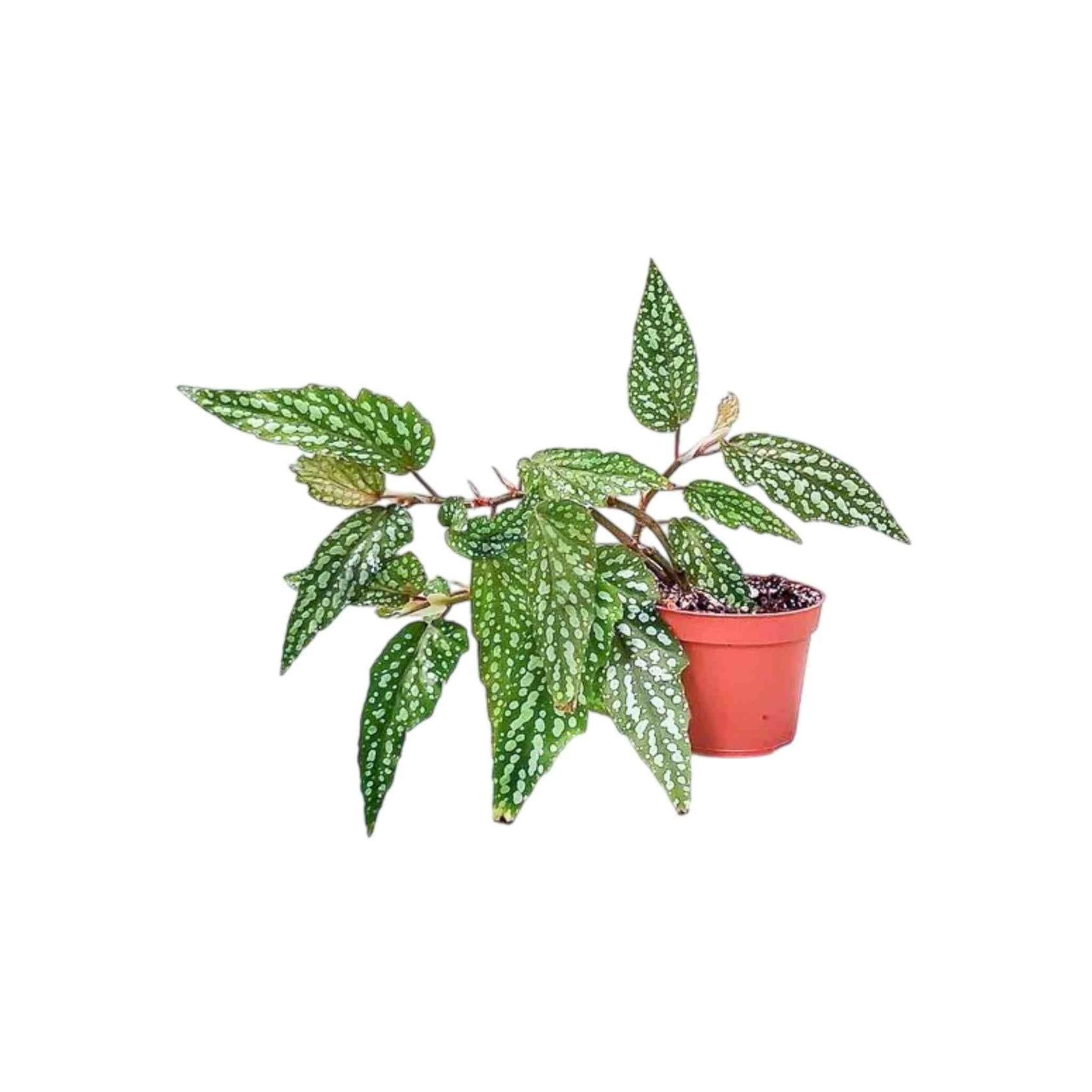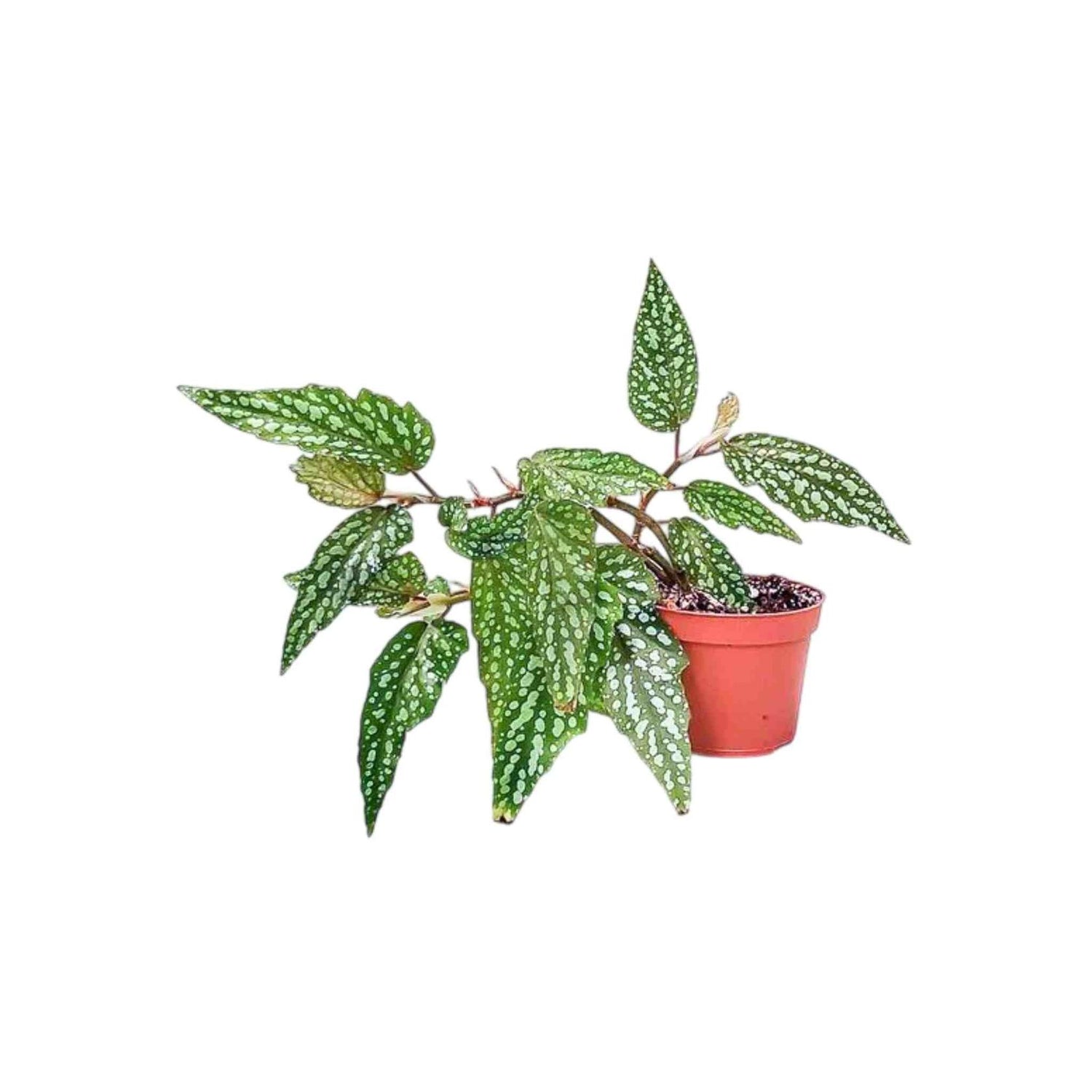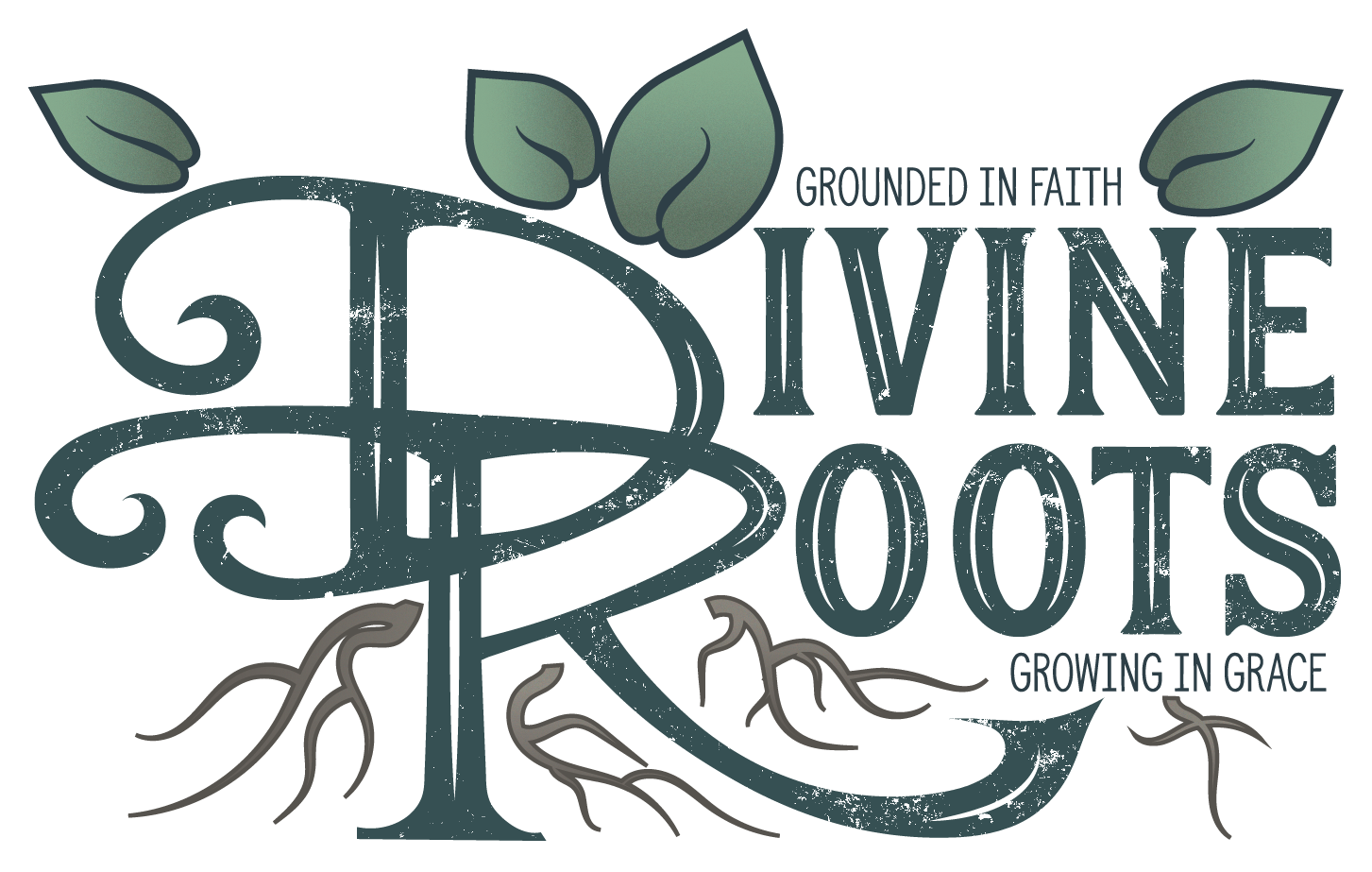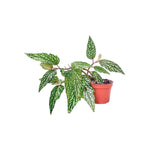
Begonia Medora (Angel Wing)
$12.28
Unit price perEstimated delivery between 01 November and 03 November.
At Divine Root, we are committed to delivering healthy, high-quality indoor plants to our customers. While we do not accept returns due to the perishable nature of live plants, we offer a 30-day plant health guarantee and store credit for qualifying issues. Please read our Refund Policy carefully to understand how we handle concerns regarding plant health, shipping, and order

Angel Wing Begonia Medora Care Guide & Presentation
Pet Safe
No
Water Needs
Medium
Sunlight
Bright
Hardiness Zones
10-11
Temperature
65°F to 75°F
Suitable Space
Bright shelves, desks
Humidity
Medium
Plant Class
Begonia
Plant Type
Perennial
Plant Characteristics
Speckled foliage
Genus
Begonia
Fertilizing
Monthly
Re-potting
1-2 Years
Cleaning
As needed
Propagation
Stem cuttings
Begonia Medora (Angel Wing): Overview
The Begonia Medora, also known as the Angel Wing Begonia Medora or Dwarf Trout Leaf Begonia, is a member of the Begoniaceae family. Native to the tropical regions of South and Central America, this compact variety is admired for its decorative foliage and easy care. Its striking wing-shaped leaves, marked with silver spots, resemble tiny trout patterns, which is why it is sometimes called the Trout Leaf Begonia. During the growing season, this plant may produce clusters of delicate pink flowers that add even more charm. Typically growing up to 12–18 inches in height, the Begonia Medora stays compact, making it ideal for smaller indoor spaces. It is not pet-friendly, as it can be toxic to cats and dogs if ingested. Keep it out of reach of pets.
Benefits of Begonia Medora
- Eye-catching foliage with distinct silver spots that brighten any room.
- A compact variety of the Angel Wing Begonia, ideal for smaller spaces.
- Air-purifying qualities that contribute to a fresher environment.
- Low-maintenance houseplant suitable for beginners and plant lovers alike.
Care Guide
Caring for the Begonia Medora is simple with the right conditions and routine.
Light and Water
- Light: Prefers bright, indirect light. Protect from harsh direct sun that may scorch leaves.
- Water: Water when the top inch of soil feels dry. Keep soil moist but never soggy.
Soil and Fertilization
- Soil: Use a light, well-draining potting mix rich in organic matter.
- Fertilizer: Apply a balanced liquid fertilizer every 4–6 weeks during the active growing season (spring and summer).
Temperature and Humidity
- Temperature: Thrives in 65–75°F (18–24°C). Protect from drafts and cold air.
- Humidity: Enjoys higher humidity. Use a humidifier or pebble tray for best results.
Pruning, Propagating, and Repotting
- Pruning: Trim leggy stems to encourage bushy growth and maintain shape.
- Propagating: Easily propagated through stem cuttings placed in soil or water.
- Repotting: Repot every 1–2 years when roots outgrow the pot, using fresh soil.
Common Problems
- Yellow Leaves: Usually caused by overwatering. Let the soil dry slightly between waterings.
- Crispy Edges: A sign of low humidity. Increase moisture in the air around the plant.
- Pests: May attract mealybugs or spider mites. Treat with insecticidal soap if needed.
Best Location and Uses
- Perfect for bright indoor spaces such as living rooms, bedrooms, and offices.
- Ideal on desks, coffee tables, and windowsills where its striking foliage can be admired.
- Works beautifully as part of a mixed indoor plant display with other tropical plants.
- A compact option that suits small apartments and cozy spaces without overwhelming them.


